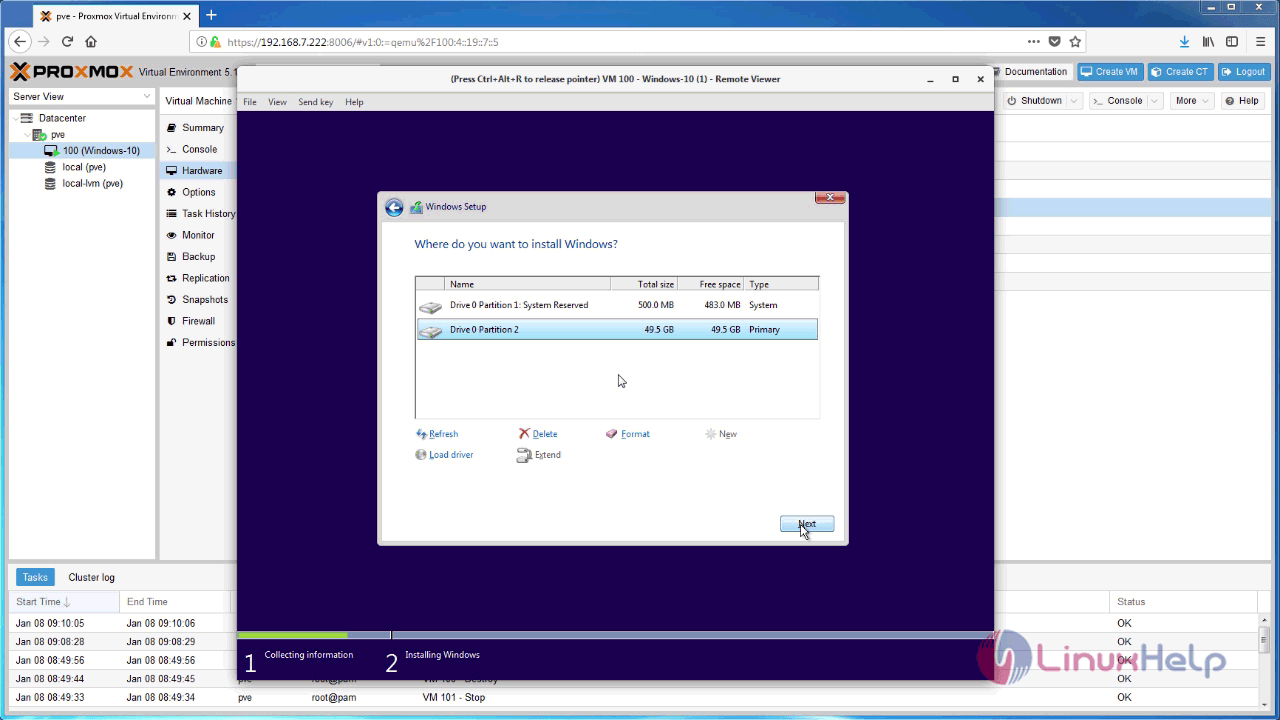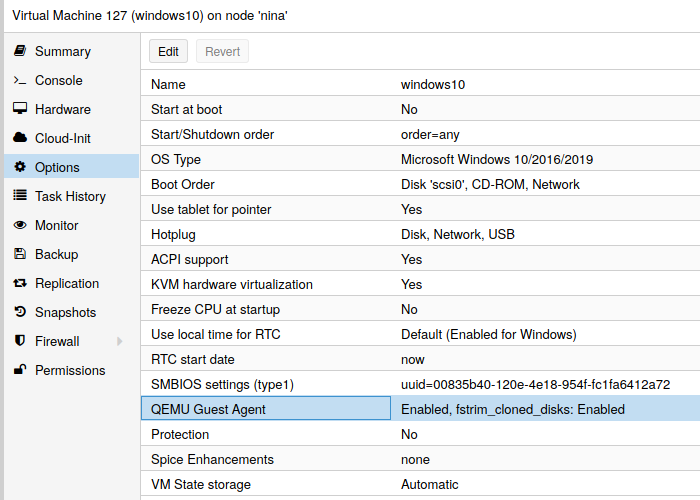The virtio drivers are added via the device manager in windows. If you add the virtio ISO file into the hardware list as another virtual cd/dvd drive then just tell windows to update the drive via the device manager and point it at the appropriate directory of the virtio pile of stuff. Here's the tut I followed. Proxmox 6 Windows 10 guest BSOD. I read you did not add the VirtIO drivers. If the VM isn't all that important to you I recommend rebuilding it. Books: KVM Best Practice.: Learning Proxmox VE.: Mastering Proxmox.: Proxmox High Availa. This is a set of best practices to follow when installing a Windows 2003 guest on a Proxmox VE server. The latest VirtIO iso do not include drivers for Windows. Since the network for my Proxmox instance has 1GB down it takes seconds to download a 4GB ISO onto Proxmox directly. If you prefer the ISO URL download method skip this section. SSH into the Proxmox node; cd wget Windows ISO URL Windows 10 x64 Enterprise; wget VirtIO Windows driver virtio-win-0.1.185.iso; Setup Vault.
- 3Installation
Introduction
In order to improve network performance, special paravirtualized network drivers can be installed in Windows guests: to use them, you have to obtain those drivers and then install them on the VM guest os.
See Windows_VirtIO_Drivers to get info about
- downloading VirtIO drivers
- changelog and guest OS compatibility
- other kind of guest devices supported
Download

Download the latest drivers (ISO) as suggested by the page Windows_VirtIO_Drivers to your desktop.
Then upload the ISO to your Proxmox VE server:
- logon to the Proxmox VE web interface
- select a ISO-enabled storage (see Storage_Model#Storage_type_Content)
- switch to 'content' tab
- just use the 'upload' button on the menu bar.

Installation
Choose the right driver
- Follow the link: Windows_VirtIO_Drivers#Choose_the_right_driver
Prepare KVM guest on Proxmox VE
- Shutdown your KVM Virtual Machine and change the used Network Card to 'virtio'.
- Select the previously uploaded ISO image as CDROM
- Start your Virtual Machine
Installation of paravirtualized driver within Windows
The Windows device manager should now detect a new network device. Just point the driver wizard to the CD-ROM containing the drivers. The drivers are not signed, choose install anyway and you are done.
If you get any conflicting IP errors or just want to clean up the old card, enable the devmgr_show_nonpresent_devices option on the server.
My Computer -> Properties -> Advanced -> Env Variables –> System Var -> New
OK/Close all windows.
My Computer -> Properties -> Hardware -> Dev Mgr -> View -> Show hidden dev
Now locate & remove old NIC Idm 6.25 fake serial key.
Performance Improvements
The KVM Project has established a 'best practice' with regard to acheiving optimal performance in Windows guests using the virtio driver.
Permanent changes to the Windows registry are required.
Proxmox Virtio Drivers Windows 2012
The procedure is published here:http://www.linux-kvm.org/page/WindowsGuestDrivers/kvmnet/registry.
Alternative: e1000
Although not paravirtualized, Windows is known to work well with the emulated Intel e1000 network card.
Just remember that
- the built in e1000 drivers in Win7/Win2008 are fine but
- the built in e1000 drivers in WinXP/Win2003 are not working!
- you need to install the usual drivers from Intel (see Intel® Ethernet Connections CD (176 MB) or Intel® Drivers Setup File (20 MB)).
- A walk through on installing e1000 drivers in a Windows XP KVM is available here. But the link for drivers download provided in that walk through was broken, use above Intel Drivers File Setup instead.